Uncategorized
Migrant caravan re-forms in Mexico, members vow to reach US

CIUDAD HIDALGO, Mexico — Despite Mexican efforts to stop them at the border, about 2,000 Central American migrants swam or rafted across a river separating that country from Guatemala, re-formed their mass caravan in Mexico and vowed to resume their journey toward the United States.
The migrants, who said they gave up trying to enter Mexico legally because the asylum application process was too slow, gathered Saturday at a park in the border city of Ciudad Hidalgo. They voted by a show of hands to continue north en masse, then marched to the bridge crossing the Suchiate River and urged those still on it to come join them.
“We are going to reach the United States,” said Erasmo Duarte, a migrant from Danli, Honduras, despite warnings to turn back this week from U.S. President Donald Trump, who has sought to make the caravan and border security into a campaign issue before the U.S. midterm election in November.
The decision to re-form the migrant caravan capped a day in which Mexican authorities again refused mass entry to migrants on the bridge, instead accepting small groups for asylum processing and giving out 45-day visitor permits to some. Authorities handed out numbers for people to be processed in a strategy seen before at U.S. border posts when dealing with large numbers of migrants.
But many became impatient and circumventing the border gate, crossing the river on rafts, by swimming or by wading in full view of the hundreds of Mexican police manning the blockade on the bridge. Some paid locals the equivalent of $1.25 to ferry them across the muddy waters. They were not detained on reaching the Mexican bank.
“We couldn’t wait because we had already waited too long and they only told us lies,” said Duarte, who joined the caravan with his wife and children six days ago.
Sairy Bueso, a 24-year old Honduran mother of two, was another migrant who abandoned the bridge and crossed into Mexico via the river. She clutched her 2-year-old daughter Dayani, who had recently had a heart operation, as she got off a raft.
“The girl suffered greatly because of all the people crowded” on the bridge, Bueso said. “There are risks that we must take for the good of our children.”
Group leaders said the caravan, which will be smaller than the original one, would strike out Sunday morning for the city of Tapachula.
Where easily 3,000 people were on the bridge the previous day, the crowd had thinned out considerably by Saturday. In addition to those who crossed the river, immigration agents processed migrants in small groups and then bused them to an open-air, metal-roof fairground in Tapachula, where the Red Cross set up small blue tents on the concrete floor.
Each time a small side gate opened to allow people to pass for processing, there was a crush of bodies as migrants desperately pushed forward. Scarleth Cruz hoisted a crying, sweat-soaked baby girl above the crowd, crying out: “This girl is suffocating.”
Cruz, 20, said she was going to ask for political asylum because of threats and repression she faced back in Honduras from President Juan Orlando Hernandez’s governing party.
“Why would I want to go to the United States if I’m going to be persecuted” there as well, she said.
Mexico’s Interior Department said it had received 640 refugee requests by Hondurans at the border crossing. It released photos of migrants getting off buses at a shelter and receiving food and medical attention.
At least half a dozen migrants fainted in the crush.
Some tore open a fence on the Guatemala side of the bridge and threw two young children, perhaps age 6 or 7, and their mother into the muddy waters about 40 feet below. They were rafted to safety in on the Mexican bank.
Mexican workers handed food and bottled water to the migrants on the bridge. Through the bars, a doctor gave medical attention to a woman who feared her young son was running a fever.
Sustenance also came from Guatemalan locals — for Carlos Martinez, a 24-year-old from Santa Barbara, Honduras, the plate of chicken with rice was the first bite to eat he’d had all day.
“It is a blessing that they have given us food,” Martinez said. “It gives me courage to keep waiting, as long as I can.”
Migrants cited widespread poverty and gang violence in Honduras, one of the world’s deadliest nations by homicide rate, as their reasons for joining the caravan.
“One cannot live back there,” said Fidelina Vasquez, a grandmother
The caravan elicited a series of angry tweets and warnings from Trump early in the week, but Mexico’s handling of the migrants at it southern border seems to have satisfied him more recently.
“So as of this moment, I thank Mexico,” Trump said Friday at an event in Scottsdale, Arizona. “I hope they continue. But as of this moment, I thank Mexico. If that doesn’t work out, we’re calling up the military — not the Guard.”
“They’re not coming into this country,” Trump added.
“The Mexican Government is fully engaged in finding a solution that encourages safe, secure, and orderly migration,” State Department Spokeswoman Heather Nauert said Saturday, “and both the United States and Mexico continue to work with Central American governments to address the economic, security, and governance drivers of illegal immigration.”
After an emergency meeting in Guatemala, presidents Hernandez of Honduras and Jimmy Morales of Guatemala said an estimated 5,400 migrants had entered Guatemala since the caravan was announced a week ago, and about 2,000 Hondurans have returned voluntarily.
Morales said a Honduran migrant died in the town of Villa Nueva, 20 miles (30
Some Hondurans were weary of the journey and disappointed by the violence at the crossing, and just wanted to head home.
“We thought the caravan was passive but there were unruly people, I was disappointed,” said Gonzalo Martinez, a 37-year-old farmer, as he boarded a bus in Tecun Uman, Guatemala to take him back to Honduras.
___
Mark Stevenson reported from Ciudad Hidalgo, and Sonia Perez D. reported from Tecun Uman, Guatemala. Associated Press writers Sonny Figueroa in Guatemala City and Peter Orsi in Mexico City contributed to this report.
Mark Stevenson And Sonia Perez D., The Associated Press
Uncategorized
Trump Admin Establishing Council To Make Buildings Beautiful Again


From the Daily Caller News Foundation
By Jason Hopkins
The Trump administration is creating a first-of-its-kind task force aimed at ushering in a new “Golden Age” of beautiful infrastructure across the U.S.
The Department of Transportation (DOT) will announce the establishment of the Beautifying Transportation Infrastructure Council (BTIC) on Thursday, the Daily Caller News Foundation exclusively learned. The BTIC seeks to advise Transportation Secretary Sean Duffy on design and policy ideas for key infrastructure projects, including highways, bridges and transit hubs.
“What happened to our country’s proud tradition of building great, big, beautiful things?” Duffy said in a statement shared with the DCNF. “It’s time the design for America’s latest infrastructure projects reflects our nation’s strength, pride, and promise.”
“We’re engaging the best and brightest minds in architectural design and engineering to make beautiful structures that move you and bring about a new Golden Age of Transportation,” Duffy continued.
Mini scoop – here is the DOT’s rollout of its Beautifying Transportation Infrastructure Council, which will be tasked with making our buildings beautiful again. pic.twitter.com/
9iV2xSxdJM — Jason Hopkins (@jasonhopkinsdc) October 23, 2025
The DOT is encouraging nominations of the country’s best architects, urban planners, artists and others to serve on the council, according to the department. While ensuring that efficiency and safety remain a top priority, the BTIC will provide guidance on projects that “enhance” public areas and develop aesthetic performance metrics.
The new council aligns with an executive order signed by President Donald Trump in August 2025 regarding infrastructure. The “Making Federal Architecture Beautiful Again” order calls for federal public buildings in the country to “respect regional architectural heritage” and aims to prevent federal construction projects from using modernist and brutalist architecture styles, instead returning to a classical style.
“The Founders, in line with great societies before them, attached great importance to Federal civic architecture,” Trump’s order stated. “They wanted America’s public buildings to inspire the American people and encourage civic virtue.”
“President George Washington and Secretary of State Thomas Jefferson consciously modeled the most important buildings in Washington, D.C., on the classical architecture of ancient Athens and Rome,” the order continued. “Because of their proven ability to meet these requirements, classical and traditional architecture are preferred modes of architectural design.”
The DOT invested millions in major infrastructure projects since Trump’s return to the White House. Duffy announced in August a $43 million transformation initiative of the New York Penn Station in New York City and in September unveiledmajor progress in the rehabilitation and modernization of Washington Union Station in Washington, D.C.
The BTIC will comprise up to 11 members who will serve two-year terms, with the chance to be reappointed, according to the DOT. The task force will meet biannually. The deadline for nominations will end Nov. 21.
Uncategorized
New report warns WHO health rules erode Canada’s democracy and Charter rights

The Justice Centre for Constitutional Freedoms has released a new report titled Canada’s Surrender of Sovereignty: New WHO health regulations undermine Canadian democracy and Charter freedoms. Authored by Nigel Hannaford, a veteran journalist and researcher, the report warns that Canada’s acceptance of the World Health Organization’s (WHO) revised International Health Regulations (IHR) represents a serious erosion of national independence and democratic accountability.
The IHR amendments, which took effect on September 19, 2025, authorize the WHO Director-General to declare global “health emergencies” that could require Canada to follow directives from bureaucrats in Geneva, bypassing the House of Commons and the will of Canadian voters.
The WHO regards these regulations as “binding,” despite having no ability or legal authority to impose such regulations. Even so, Canada is opting to accept the regulations as binding.
By accepting the WHO’s revised IHR, the report explains, Canada has relinquished its own control over future health crises and instead has agreed to let the WHO determine when a “pandemic emergency” exists and what Canada must do to respond to it, after which Canada must report back to the WHO.
In fact, under these International Health Regulations, the WHO could demand countries like Canada impose stringent freedom-violating health policies, such as lockdowns, vaccine mandates, or travel restrictions without debate, evidence review, or public accountability, the report explains.
Once the WHO declares a “Pandemic Emergency,” member states are obligated to implement such emergency measures “without delay” for a minimum of three months.
Importantly, following these WHO directives would undermine government accountability as politicians may hide behind international “commitments” to justify their actions as “simply following international rules,” the report warns.
Canada should instead withdraw from the revised IHR, following the example of countries like Germany, Austria, Italy, Czech Republic, and the United States. The report recommends continued international cooperation without surrendering control over domestic health policies.
Constitutional lawyer Allison Pejovic said, “[b]y treating WHO edicts as binding, the federal government has effectively placed Canadian sovereignty on loan to an unelected international body.”
“Such directives, if enforced, would likely violate Canadians’ Charter rights and freedoms,” she added.
Mr. Hannaford agreed, saying, “Canada’s health policies must be made in Canada. No free and democratic nation should outsource its emergency powers to unelected bureaucrats in Geneva.”
The Justice Centre urges Canadians to contact their Members of Parliament and demand they support withdrawing from the revised IHR to restore Canadian sovereignty and reject blind compliance with WHO directives.
-

 Business2 days ago
Business2 days agoBank of Canada governor warns citizens to anticipate lower standard of living
-
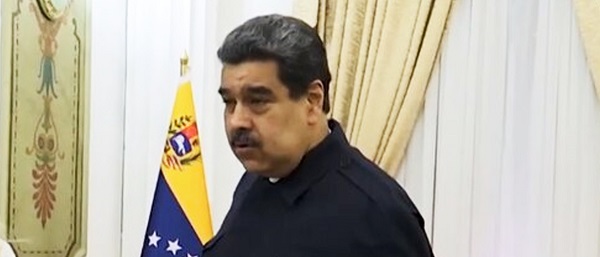
 International2 days ago
International2 days agoUS Reportedly Weighing Military Strikes On Narco Targets Inside Venezuela
-
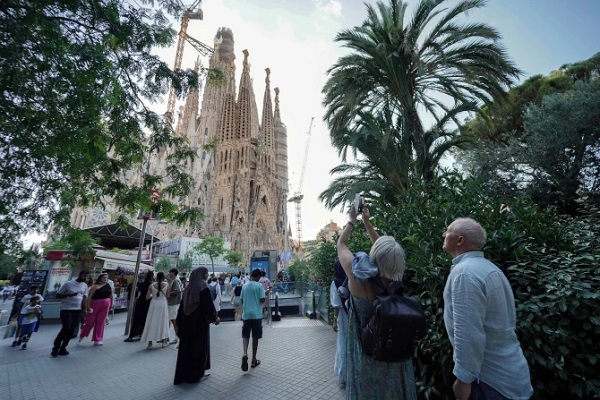
 International2 days ago
International2 days agoSagrada Familia Basilica in Barcelona is now tallest church in the world
-
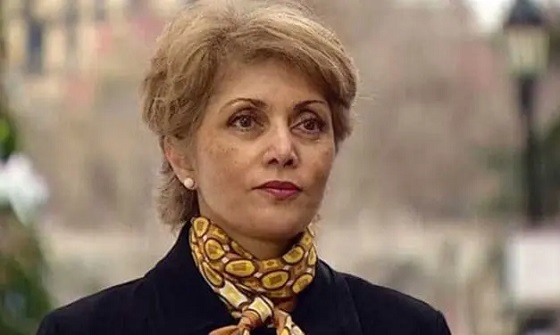
 Alberta2 days ago
Alberta2 days agoGondek’s exit as mayor marks a turning point for Calgary
-

 Agriculture2 days ago
Agriculture2 days agoCloned foods are coming to a grocer near you
-
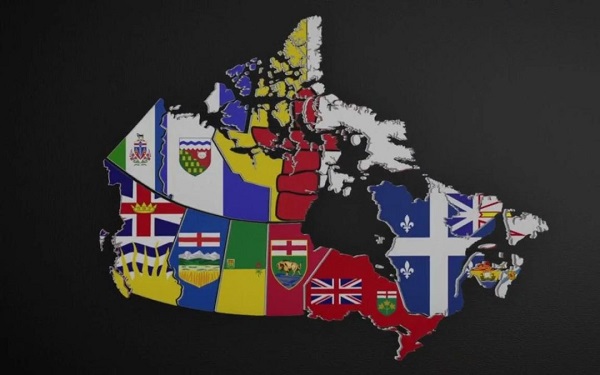
 Fraser Institute2 days ago
Fraser Institute2 days agoOttawa continues to infringe in areas of provincial jurisdiction
-
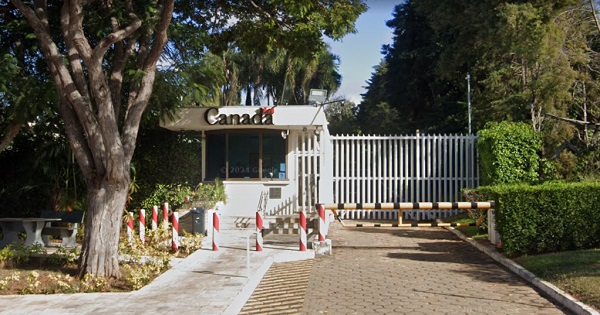
 Business16 hours ago
Business16 hours agoYou Won’t Believe What Canada’s Embassy in Brazil Has Been Up To
-

 Censorship Industrial Complex15 hours ago
Censorship Industrial Complex15 hours agoSenate Grills Meta and Google Over Biden Administration’s Role in COVID-Era Content Censorship










